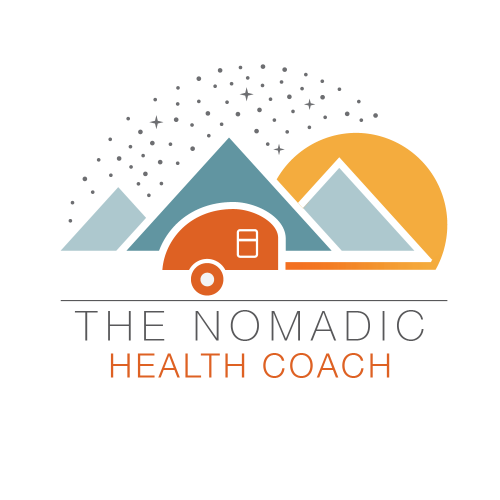What the heck is a Dosha anyway? And how can Ayurveda help me live a more sustainable and happy life?
(5 Minute Read)
If you’re anything like me, your curious about natural ways to support and heal your body and Ayurveda can help. Many folks though, turn to outside forces and remedies because it looks to be a quick fix, and we seem to be all about getting it fixed right now. But this isn’t a sustainable way to live and will most certainly backfire on us in the long run.
Ayurveda teaches us mindfulness, and to slow down. So much of our stress comes from trying to do too many things at once which causes us to end up in forced relaxation—or simply put—exhaustion. Get to know your body, how it works, what it needs, and when you’re in or out of balance. This is key to being proactive about your health and well being as opposed to being reactionary and looking for that quick fix!
I sat down with Jen Colletti, a good friend of mine and teacher of Ayurveda (an Ayurveda Yoga Specialist). I asked her a few questions that can help us learn more about this ancient and holistic system.
LW: Hi Jen! Can you please help us pronounce the word Ayurveda and tell us what it means?
JC: Certainly! It is pronounced EYE-UR-VEH-DA. Ayuh = life and Veda = knowledge, Ayurveda literally translates to “life knowledge”
LW: And what exactly is Ayurveda?
JC: Ayurveda is a system of healing that is rooted in ancient India. It is thought by many scholars to be the oldest healing system existent on our planet, at 5000 years old. It is steeped in rich philosophy and history. Sometimes this philosophy can be a bit intimidating. My hope is to introduce you to Ayurveda by dipping a toe in the water, tampering those parts of it that can feel a bit overwhelming, and help you apply it to our modern lifestyle. As you get comfortable with these practices, you can add in additional when you are ready.
LW: Got it. How can we take the first step?
JC: Within Ayurveda are three Doshas; Vatta, Pitta and Kapha. Dosha’s are like a guidebook for each of us. This guidebook tells us what the shape of our body might be like, what emotions we are pre-disposed towards, what our appearance is like, and even what behaviors are common for us. Each of us unique beings has one Dosha that leads within us, maybe two, rarely three. One can take a quiz to find out what Dosha you are. As you do this quiz, take it with the mindset, that you are answering for what your body is the majority of your life, not necessarily when you are out of balance.
LW: This is SO good to understand. I have often struggled with how to answer these test questions. I’ve added links at the end of the interview so readers can test their own Doshas. So tell us, is Ayurveda considered a form of yoga?
JC: Ayurveda is the sister science to yoga, or the medicine of yoga. The body mind and spirit are one, and can never be separate in Ayurveda. Everything is whole, united and a part of everything in life. Healing therefore is about the whole body, it is never separated out by a symptom or ailment. This is the foundation of healthy living and a joyful life in Ayurveda.
The purpose of Ayurveda is to use a series of practices or routines to keep our “whole” self in balance, as well as empowering us to understand when we are swinging out of balance. I like to think of Ayurveda as a massive study in self-care, the practice puts healing in our hands, and teaches us to recognize when the body, mind and spirit need attention.
LW: How do we know when our bodies are out of balance?
JC: When we swing out of balance, our body starts talking to us. Aches, pains, weird digestion… they are all the bodies way of saying… “hey listen to me!” I think of those symptoms as our bodies way of tapping us on the shoulder and asking us to listen to the wisdom of the self (the inner self). If we don’t take the time to listen to those taps, they will get louder and louder, showing greater and greater imbalance. Symptoms are the warning signals for our bodies to take notice. The really important part of those shoulder taps, is to LISTEN (truth be told, our culture is not always great at that). It takes conscious effort, and a choice to be your own “Wellness Warrior” to step outside of the norm and really pay attention to your bodies cues.
LW: Amen to that. And I love the term “Wellness Warrior”. Sadly, I believe most folks ignore their symptoms until it’s a crisis. How can we begin to listen and change our behavior?
JC: It’s the little things that matter with Ayurveda. Small steps are the pathway to create bigger success. There are simple ways to begin to swing the body towards balance, three of which I would like to share with you today. There are many more we can look at, at a later time, right now we are going to start small, so we can ultimately affect that greater success.
1. Take time to sip a Chai Tea.
The making of Chai is a beautiful practice, it allows us to slow down in this crazy 24/7 world we live in. The spices in a Chai are a beautiful balance of the six tastes in Ayurveda (astringent, bitter, pungent, sour, salty and sweet). As we use each of these six tastes in our meals, it helps to bring our body, mind and spirit into balance.
Take the time to make this from scratch. Traditionally it is made with a black tea, however if you prefer an herbal or decaf, you could use a Rooibos, or I also like the Tazo Decaf Chai, and then add additional spices. Be mindful if you are purchasing a pre-packaged chai, they commonly have a great deal of sugar (which can exacerbate imbalance). Choose to make your own instead so you can control your ingredients.
Chai Tea Recipe:
- 20-30 seeds or 4 cardamom pods shelled
- 1-2 pieces of Ceylon cinnamon stick (Ceylon is true Cinnamon)
- 6-8 whole cloves
- 2 pcs star anise
- 3 cups whole milk or milk alternative
- 1-1/2 tablespoons honey or to your taste
- Pot of brewed black tea, rooibos, or tazo decaf chai
- Lightly crush (but not to a powder) cardamom, cinnamon, and cloves in a mortar to release their fragrance.
- In a saucepan, combine all spices and milk and warm over medium heat, do not boil or the milk may separate. Reduce the heat to low and simmer, until the spices release their flavor and aroma. Add the honey continue and whisk in.
- To serve hot, fill tea cup ½-2/3 with tea, and then strain the milk and spices into cup over tea, stir and serve at once. For cold tea, cool, strain and serve over ice.
Note: Feel Free to modify the amount of spices to suit your palate Serves 4-6
LW: I feel balanced already:) And that sounds so delish! I have also posted a decaf Chai recipe on the blog over here. So, what’s next?
2. Bless your food.
Pause before you eat whichever meal is in front of you and send gratitude for the offering, the person that cooked this meal, the bounty of food, the farmer that grew the food in front of you, and anything else you might like to bring gratitude too.
You can even do this quietly to yourself with a Mudra (hand gesture that can guide energy in a particular way, commonly calming our subtle energy body) and a silent prayer. Cross your middle finger over your pointer finger, and touch your plate, this is a blessing Mudra. Silently say a gratitude blessing to yourself. There are blessings from the Bhagavad Gita as well as the Upanishads if you would enjoy something steeped in tradition.
“Let us eat together, let us be together, let us be vital together, radiating the light of truth never entertaining any negativity.” (or try it in sanskrit: Saha navavatu, saha nau bhunaktu, saha viryam karavavahai, tejasvi nav adhitumastu, ma vidvashshavahai – Upanishads)
LW: I love this so much. People eat standing up, at their desks, and in their cars which is so upsetting to our bodies. This practice brings us present and slows us down.
3. Begin a Breath Practice.
Sit in a quiet and comfortable spot with your feet firmly planted on the ground. Use a gentle timer like the Insight Timer App, which offers a few different options of calming chimes to re-awake you. Set the timer for 5 minutes.
Let your eyes close, and begin to watch your inhales come in to your body, and watch your exhales go out. Let your inhales and exhales slow down, let the breaths get longer and slower and expand your breath into your ribcage.
Keep watching each breath move in, and each breath move out. Repeat to yourself on the inhale “I breathe in calm”, on the exhale “I breath out distraction”.
When your mind wanders, gently bring it back to watching your breath once again. Keep this breath flowing, and when your timer goes off, gently bring your awareness back, and re-open your eyes.
LW: Ahhhh, so calming. And thanks for the app tip! There’s nothing worse than coming out of a mediation with a loud alarm.
JC: I love each of these practices and they are the very gentle shift the nervous system needs. These are practices that slow down our mind and our body. They quiet the fight or flight response, and bring us into the rest and digest part of the nervous system. Rest and digest is the part of the nervous system where healing is optimized, inflammation is tampered, and we re-learn what safety feels in the body once again. Remember starting with small practices will give you greater success!
LW: This was so fantastic Jen and such simple and easy ways to begin to take care of ourselves. I love your advice to start small. Thank you so much for your time and expertise. I can’t wait to have you back for more!
As promised, below are two links to find out what your Doshas are.
Remember! As you do either quiz, take it with the mindset, that you are answering for what your body is the majority of your life, not necessarily when you are out of balance.
#1: The Chopra Center – Discover Your Dosha Type
#2: Banyan Botanicals – More Than a Dosha Quiz
**For the record: I am Vatta Pitta Kapha (tri-Dosha balanced) in test #1 and Pitta Vatta Kapha in test #2. As I have gotten older I have seen Pitta become my dominant Dosha in place of Vatta. Take into consideration your dominant Dosha may be different depending on the style of testing!
If you have any questions for Jen, please leave them in the comments below!
Breathe Deep and Live Well,






